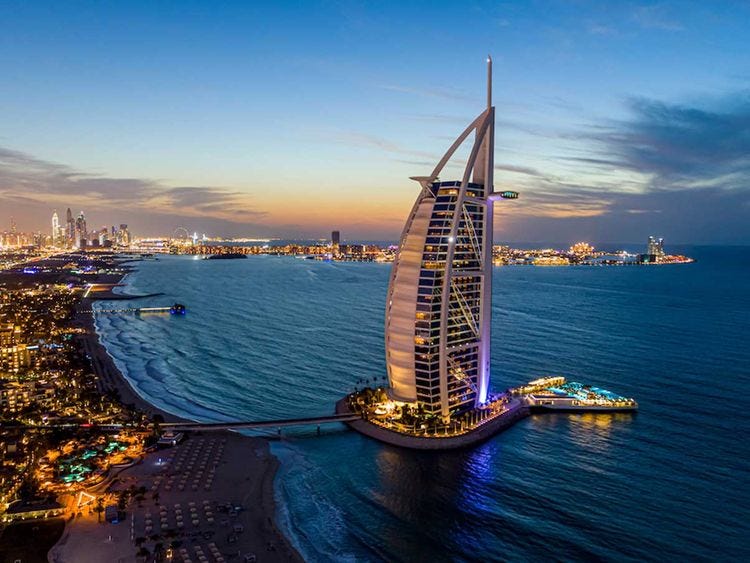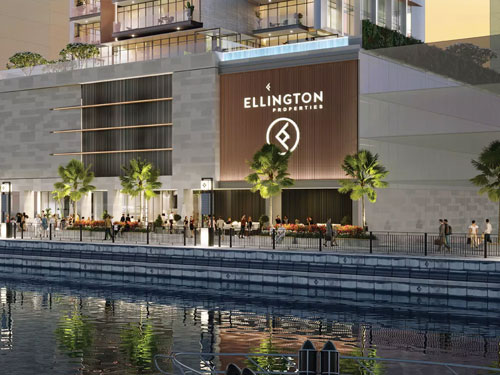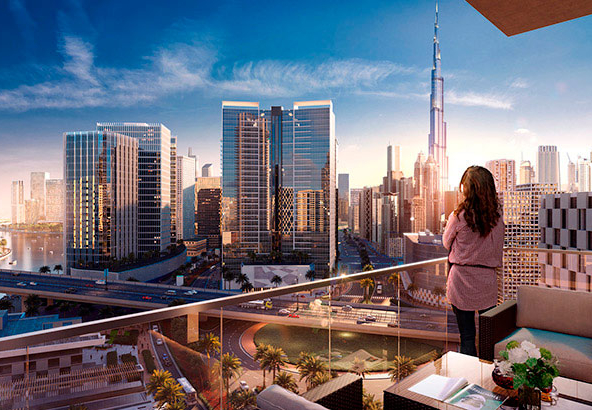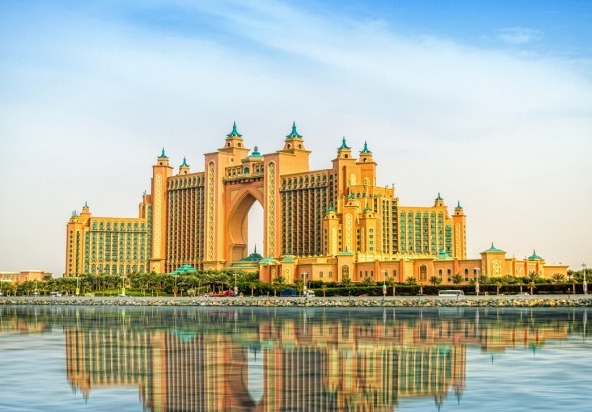When one thinks of Dubai’s skyline, the iconic silhouette of the Burj Al Arab immediately comes to mind. Often referred to as the “world’s most luxurious hotel,” the Burj Al Arab is more than just a place to stay—it’s a symbol of Dubai’s meteoric rise to global prominence.
Situated on its own artificial island, this sail-shaped marvel is not only an architectural wonder but also a beacon of opulence, attracting travelers from around the globe. But beyond its glitz and glamour, the Burj Al Arab plays a pivotal role in Dubai’s real estate landscape, contributing to the city’s reputation as a hub for luxury living and investment. In this comprehensive guide, we will delve into every aspect of the Burj Al Arab, from its architectural significance to its impact on the real estate market, while also exploring the unique experiences it offers to its guests.
What will you read in this article:
Architectural Masterpiece: A Symbol of Modern Dubai
Design and Construction
The Burj Al Arab’s design is inspired by the sail of a traditional Arabian dhow, a symbol that reflects Dubai’s rich maritime heritage. Standing at a height of 321 meters, it was the tallest hotel in the world at the time of its completion in 1999.
Designed by British architect Tom Wright of WS Atkins, the Burj Al Arab is an engineering marvel. The hotel’s distinctive sail shape required innovative construction techniques, including a double-skinned Teflon-coated fiberglass facade that gives it a bright white color by day and serves as a canvas for a vibrant light show at night.
The construction of the Burj Al Arab was no small feat. Built on a man-made island 280 meters offshore, the project required the construction of a massive concrete base supported by 230 concrete piles driven into the sand. The island was then connected to the mainland by a gently curving causeway, adding to the sense of exclusivity.
The interior, designed by Khuan Chew of KCA International, is equally breathtaking, featuring a palette of vibrant colors, luxurious materials like 24-karat gold leaf, and intricate designs inspired by Arabian culture.
Sustainability and Innovation
While the Burj Al Arab is often celebrated for its luxury, it’s also a showcase of innovative engineering and sustainability. The hotel’s designers incorporated state-of-the-art technology to reduce its environmental footprint. The building’s facade, for instance, helps reduce heat gain, minimizing the need for air conditioning in Dubai’s scorching climate. The hotel also features a sophisticated waste management system and water recycling facilities, underscoring Dubai’s commitment to sustainable development.
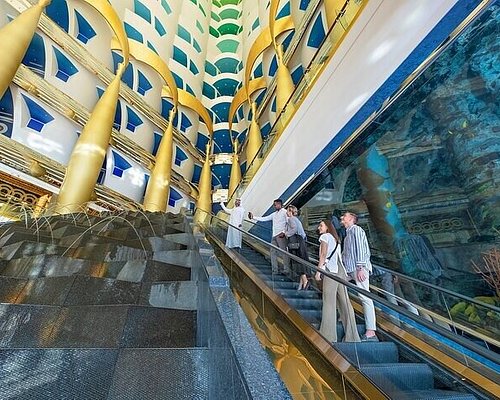
The Helipad: A Platform for Iconic Moments
One of the most famous features of the Burj Al Arab is its helipad, located near the top of the building at a height of 210 meters. Originally designed for helicopter landings, the helipad has been used for a variety of high-profile events that have captured the world’s imagination. From tennis matches featuring Roger Federer and Andre Agassi to a Formula 1 car performing donuts, the helipad has become an iconic stage for showcasing Dubai’s love for grandeur and innovation.
The Burj Al Arab Experience: A New Standard of Luxury
Accommodation: Beyond Five-Star
The Burj Al Arab redefined the concept of luxury when it opened, offering a level of service and accommodation that went beyond the standard five-star rating. The hotel exclusively offers duplex suites, with a total of 202 suites ranging from 170 square meters to an astonishing 780 square meters in size. Each suite is a masterpiece of design, featuring floor-to-ceiling windows that offer panoramic views of the Arabian Gulf and the Dubai skyline.
Guests are treated to an array of bespoke services, including a personal butler available 24/7, Hermes amenities, and access to a fleet of chauffeur-driven Rolls-Royce Phantoms. The hotel also offers a pillow menu with 17 different options, ensuring that every guest enjoys a customized sleep experience. The suites’ interiors are a blend of traditional Arabian aesthetics and modern luxury, with rich fabrics, hand-woven carpets, and opulent furnishings that create a sense of grandeur and comfort.
Dining: Culinary Excellence in Exquisite Settings
The Burj Al Arab is home to some of the most exclusive dining experiences in Dubai. The hotel boasts nine world-class restaurants and bars, each offering a unique culinary journey. Among them is Al Muntaha, located 200 meters above the Arabian Gulf, offering French cuisine with a panoramic view of the city. Al Mahara, another standout, provides a dining experience like no other, with a floor-to-ceiling aquarium that creates the illusion of dining underwater.
For those seeking a taste of authentic Arabian cuisine, Al Iwan serves a lavish buffet in a setting adorned with rich gold and red tones, evoking the splendor of an Arabian palace. Meanwhile, the Skyview Bar, located on the 27th floor, is the perfect spot for afternoon tea or a nightcap, offering stunning views of the Palm Jumeirah and beyond. Each restaurant in the Burj Al Arab is not just a place to eat, but an experience that delights all the senses.
Wellness and Recreation: Unparalleled Luxury
The Burj Al Arab offers a range of wellness and recreational facilities that cater to the most discerning guests. The Talise Spa, located on the 18th floor, is a sanctuary of relaxation and rejuvenation. With a range of treatments inspired by Arabian traditions, as well as contemporary therapies, the spa offers a holistic wellness experience. Guests can indulge in signature treatments like the Arabian Aromatherapy massage, or enjoy a dip in the infinity pool that seems to merge with the sea.
The hotel’s fitness center is equipped with state-of-the-art equipment, and personal trainers are available to tailor workouts to individual needs. For those who prefer outdoor activities, the hotel offers private access to a pristine beach, where guests can enjoy water sports like windsurfing, kayaking, and paddleboarding. Additionally, the Burj Al Arab’s luxurious yacht, available for private charters, allows guests to explore the Arabian Gulf in style.
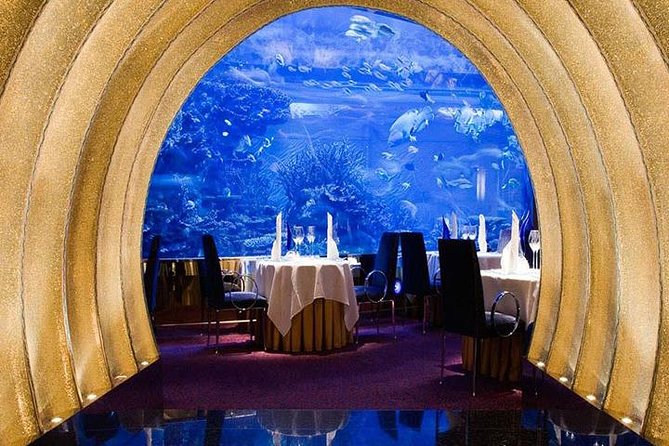
Real Estate Impact: The Burj Al Arab’s Influence on Dubai’s Market
Luxury Real Estate Development
The Burj Al Arab, often dubbed the world’s only “seven-star” hotel, is more than just an architectural marvel; it represents a pivotal moment in Dubai’s transformation into a global luxury destination. Here’s a deeper look into how the Burj Al Arab has shaped the luxury real estate market in Dubai:
1. Catalyst for Luxury Real Estate Growth
Symbol of Opulence: The Burj Al Arab’s groundbreaking design and its extreme luxury set a new benchmark for high-end living. It demonstrated that Dubai could support and attract a luxury market at the highest echelons. The hotel’s success showcased Dubai’s potential to be a global luxury hub, inspiring developers to pursue ambitious projects.
Surge in High-End Projects: Following the Burj Al Arab’s opening in 1999, there was a significant increase in luxury real estate developments. Areas like Palm Jumeirah, Downtown Dubai, and Dubai Marina saw a wave of upscale residential and commercial projects. These developments were often designed to compete with or complement the grandeur exemplified by the Burj Al Arab.
2. Influence on Property Values
Premium for Proximity: Properties near the Burj Al Arab, particularly those with direct views of the hotel, command premium prices. The hotel’s iconic status makes such residences highly desirable. For example, luxury apartments and villas in Jumeirah Beach and surrounding areas can demand higher values due to their proximity to this landmark.
Enhanced Real Estate Appeal: The presence of the Burj Al Arab has made neighboring areas more attractive to high-net-worth individuals and investors. The hotel acts as a beacon of luxury, adding prestige and increasing property values in its vicinity. This effect can be seen in the development of luxury communities and exclusive residences in nearby locales.
3. Impact on Urban Development
Architectural and Cultural Influence: The Burj Al Arab’s design and its role as a luxury icon have influenced the architectural style of subsequent developments. Developers and architects in Dubai often draw inspiration from the hotel’s opulence, aiming to create structures that match or exceed its grandeur.
Tourism and Real Estate Synergy: The hotel’s global recognition attracts a high number of international tourists and business travelers, which in turn stimulates demand for luxury accommodations and high-end real estate. This synergy between tourism and real estate has led to the development of additional luxury hotels, resorts, and residential properties catering to affluent clients.
4. Market Dynamics and Investment
Investor Confidence: The success of the Burj Al Arab has bolstered investor confidence in Dubai’s real estate market. High-profile developments and the luxury segment continue to attract significant investment, both from local and international sources.
Luxury Lifestyle Appeal: The Burj Al Arab has helped establish Dubai as a desirable location for luxury living. The city’s brand as a high-end destination continues to be reinforced by such iconic projects, attracting wealthy individuals who seek both prestige and a high standard of living.
In summary, the Burj Al Arab has had a transformative effect on Dubai’s luxury real estate market, influencing development trends, property values, and the overall appeal of the city. Its legacy continues to shape the real estate landscape, reinforcing Dubai’s position as a premier destination for luxury and exclusivity.
Tourism and Economic Impact
Beyond its influence on real estate, the Burj Al Arab has played a significant role in boosting Dubai’s tourism sector. The hotel’s iconic status and unparalleled luxury have attracted wealthy travelers from around the world, contributing to the city’s reputation as a global luxury destination. This influx of high-net-worth individuals has had a ripple effect on Dubai’s economy, driving demand for luxury goods, services, and experiences.
The Burj Al Arab has also become a symbol of Dubai’s ambition and success, helping to attract foreign investment and fostering confidence in the city’s real estate market. Its success has inspired other developers to pursue similarly ambitious projects, further fueling Dubai’s growth and development.
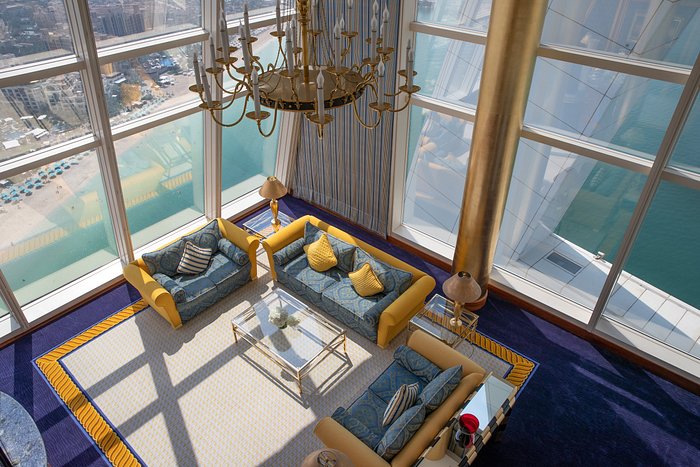
Global Recognition and Awards
The Burj Al Arab has achieved extraordinary global recognition and acclaim since its opening, and this has only reinforced its status as a symbol of unparalleled luxury and innovation. Here’s a detailed look at how its awards, cultural significance, and media presence contribute to its global prestige:
1. Awards and Accolades
Luxury Hotel Awards: The Burj Al Arab has frequently been recognized as the world’s most luxurious hotel by various prestigious travel publications and award organizations. These accolades are often based on its opulent design, exceptional service, and unparalleled amenities. Awards from entities such as the World Travel Awards and the Forbes Travel Guide have cemented its reputation in the luxury hospitality sector.
Restaurant Recognition: The hotel’s dining establishments, such as Al Mahara and Al Muntaha, have received multiple awards for their culinary excellence. Michelin stars, as well as accolades from international dining guides and critics, highlight the exceptional quality and innovation of its food and service.
Helipad Events: The Burj Al Arab’s helipad has gained fame for hosting high-profile events that underscore Dubai’s boldness and creativity. From world-record skydives to extravagant private events, the helipad has become a stage for spectacles that attract global attention and showcase the hotel’s commitment to pushing boundaries.
2. Iconic Design and Cultural Impact
Architectural Marvel: Designed by architect Tom Wright, the Burj Al Arab is celebrated for its distinctive sail-shaped silhouette and luxurious interior. Its design not only reflects the cultural heritage of Dubai but also sets a global standard for architectural innovation and luxury. The hotel’s construction and design have earned numerous architectural awards and are often studied in design and engineering courses.
Cultural Landmark: The hotel has become an emblem of Dubai’s rapid transformation and ambition. Its image is frequently used to represent Dubai’s modernity and luxury on a global stage. As a cultural landmark, it appears in countless media formats, reinforcing its status as a symbol of the city’s success and luxury ethos.
3. Media Presence and Popular Culture
Film and Television: The Burj Al Arab has featured prominently in a range of films, television shows, and documentaries. Its striking appearance and luxury status make it a favored location for filmmakers and producers seeking to depict opulence and grandeur. The hotel’s inclusion in popular media helps maintain its visibility and allure.
Photography and Art: The hotel’s dramatic architecture and picturesque location have made it a popular subject for photographers and artists. Its striking form and luxurious setting offer rich visual material that has been featured in art exhibitions, coffee table books, and online galleries.
Music Videos and Commercials: The Burj Al Arab has also appeared in various music videos and high-profile commercials. Its iconic silhouette and reputation for luxury make it an attractive backdrop for brands looking to convey exclusivity and sophistication.
4. Global Recognition
Tourism and Hospitality: The global acclaim of the Burj Al Arab attracts visitors from around the world, contributing to Dubai’s tourism industry. Its reputation as a premier destination for luxury travel has a significant impact on Dubai’s global image as a high-end travel hub.
Symbol of Dubai’s Growth: As one of the most recognizable buildings in the world, the Burj Al Arab symbolizes Dubai’s rapid development and ambition. Its global recognition is a testament to the city’s success in establishing itself as a major player on the international luxury stage.
In summary, the Burj Al Arab’s numerous awards, iconic design, and pervasive media presence have all contributed to its status as a global icon. Its impact extends beyond just hospitality, influencing architecture, culture, and media, and continually reinforcing Dubai’s image as a premier destination for luxury and innovation.
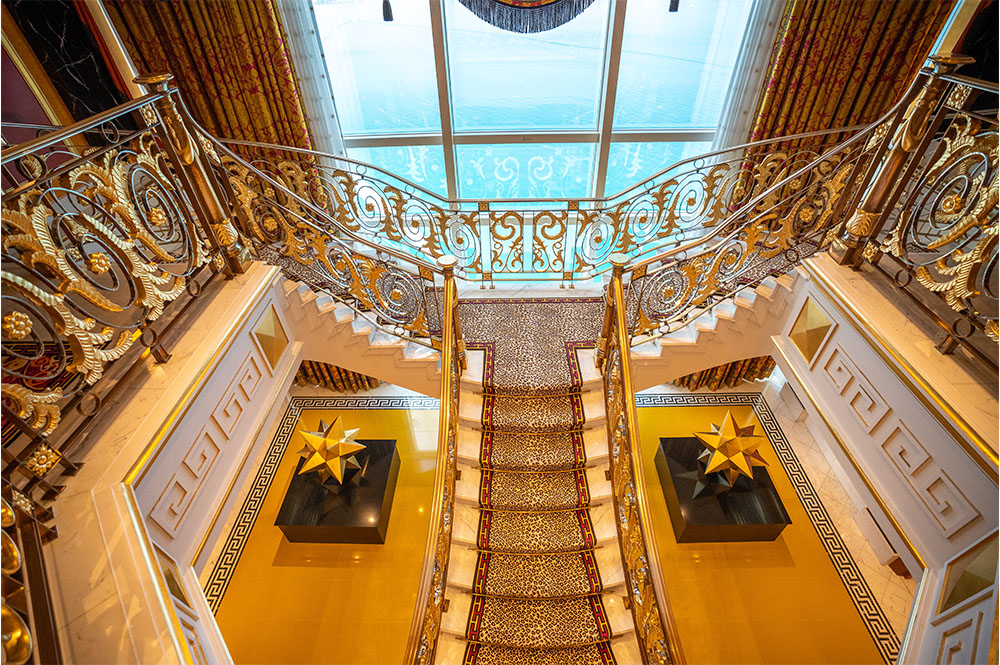
Cultural Significance and Symbolism
The Burj Al Arab is more than just a hotel; it is a symbol of Dubai’s transformation from a small trading port to a global metropolis. Its sail-shaped design reflects Dubai’s maritime heritage, while its luxurious interiors and services represent the city’s modernity and prosperity. The Burj Al Arab has become a source of pride for Dubai’s residents and a symbol of the city’s ambition and success on the global stage.
The hotel’s cultural significance extends beyond Dubai’s borders, as it has become a symbol of the Middle East’s emergence as a global economic and cultural powerhouse. The Burj Al Arab represents the region’s ability to blend tradition with modernity, creating a unique identity that resonates with people around the world.
The Burj Al Arab is not just a hotel; it is a symbol of Dubai’s ambition, innovation, and success. From its groundbreaking design to its unparalleled luxury and service, the Burj Al Arab has set new standards for hospitality and has had a profound impact on Dubai’s real estate market. It has become a global icon, attracting wealthy travelers and investors from around the world and contributing to Dubai’s status as a leading luxury destination.
The Burj Al Arab’s influence extends beyond tourism and real estate, as it has become a symbol of Dubai’s cultural and economic renaissance. Its iconic presence on Dubai’s skyline serves as a testament to the city’s ability to dream big and achieve the extraordinary.
The Burj Al Arab’s legacy is one of pushing boundaries, whether in architectural innovation, luxury hospitality, or cultural significance. It has redefined what it means to offer luxury and has set a precedent for future developments in Dubai and beyond. As a cultural icon, the Burj Al Arab has transcended its role as a hotel to become a symbol of Dubai itself—a city that dares to dream and continuously strives to be the best.
For real estate investors, the Burj Al Arab’s influence is unmistakable. Properties in its vicinity have gained immense value, and the hotel’s presence continues to draw attention to Dubai as a premier destination for luxury living. The success of the Burj Al Arab has laid the foundation for future developments, making it a cornerstone of Dubai’s real estate and tourism industries.
In conclusion, the Burj Al Arab is more than just an architectural marvel or a luxury hotel—it’s a symbol of Dubai’s journey to becoming a global city. Its influence permeates various aspects of Dubai’s economy, culture, and real estate market, making it an essential landmark in the story of Dubai’s rise to prominence. Whether you’re a visitor experiencing its unparalleled luxury, an investor seeking prime real estate, or a resident taking pride in your city’s achievements, the Burj Al Arab stands as a reminder of what is possible when vision, ambition, and innovation come together.
